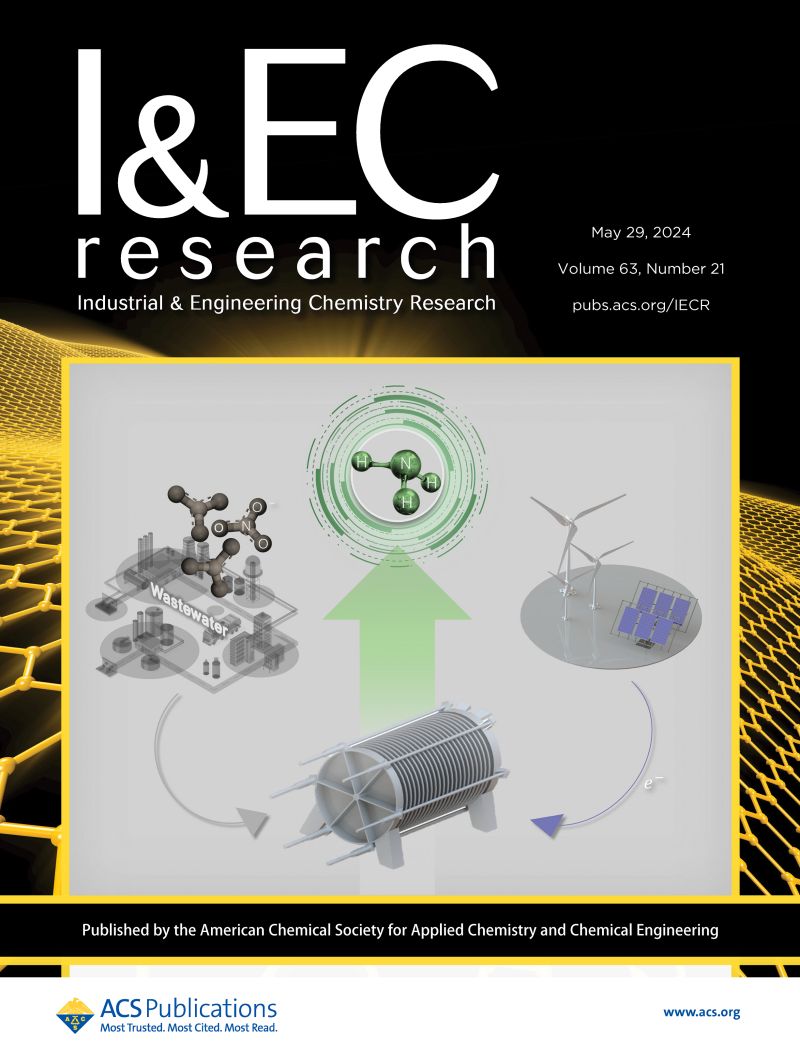Boron/Nitrogen Codoped Porous Carbon: An Efficient Oxygen Reduction Electrocatalyst for H2O2 Production
IF 3.8
3区 工程技术
Q2 ENGINEERING, CHEMICAL
引用次数: 0
Abstract
Electrochemical synthesis of H2O2 via a two-electron oxygen reduction reaction (2e– ORR) has emerged as a potential alternative to the traditional anthraquinone method, but developing efficient electrocatalysts with good activity and selectivity is still a challenge. Herein, B/N codoped porous carbon (B/N-MC) was prepared by ZnO template-assisted method. The obtained B/N-MC exhibits excellent catalytic performance for 2e– ORR. When tested in 0.1 M KOH, the B/N-MC has an outstanding Faradaic efficiency over 95% and a higher H2O2 yield rate of 5.5 mol h–1gcat–1, which is 2.1 times higher than that of N-MC without B (2.6 mol h–1gcat–1). DFT calculation results confirm that it is the N/B doping that leads to the electron redistribution of B/N-MC and enhances its adsorption to O2, thus improving the 2e– ORR performance of H2O2 generation. Furthermore, the on-site produced H2O2 on B/N-MC has been successfully used for disinfection and dye degradation, proving its potential for industrial applications. This work provides a new way to improve the performance of carbon-based catalysts by modulating their morphology and electronic structure.

硼/氮共掺杂多孔碳:一种高效的氧还原制H2O2电催化剂
通过双电子氧还原反应(2e - ORR)电化学合成H2O2已成为传统蒽醌方法的潜在替代品,但开发具有良好活性和选择性的高效电催化剂仍然是一个挑战。本文采用ZnO模板辅助法制备了B/N共掺杂多孔碳(B/N- mc)。所得的B/N-MC对2e - ORR具有优异的催化性能。在0.1 M KOH条件下,B/N-MC的法拉第效率达到95%以上,H2O2产率达到5.5 mol h-1gcat-1,是不含B的N-MC (2.6 mol h-1gcat-1)的2.1倍。DFT计算结果证实,正是N/B掺杂导致了B/N- mc的电子重分布,增强了其对O2的吸附,从而提高了生成H2O2的2e - ORR性能。此外,在B/N-MC上现场产生的H2O2已成功用于消毒和染料降解,证明了其工业应用潜力。这项工作为通过调节碳基催化剂的形态和电子结构来改善其性能提供了一条新的途径。
本文章由计算机程序翻译,如有差异,请以英文原文为准。
求助全文
约1分钟内获得全文
求助全文
来源期刊

Industrial & Engineering Chemistry Research
工程技术-工程:化工
CiteScore
7.40
自引率
7.10%
发文量
1467
审稿时长
2.8 months
期刊介绍:
ndustrial & Engineering Chemistry, with variations in title and format, has been published since 1909 by the American Chemical Society. Industrial & Engineering Chemistry Research is a weekly publication that reports industrial and academic research in the broad fields of applied chemistry and chemical engineering with special focus on fundamentals, processes, and products.
 求助内容:
求助内容: 应助结果提醒方式:
应助结果提醒方式:


